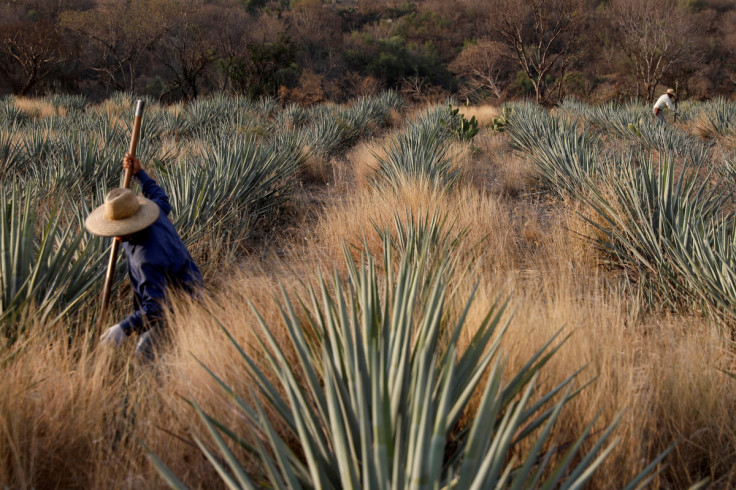European thirst for tequila aggravates agave crunch
He can't pour tequila fast enough. Premium shots. Margaritas. Palomas. The occasional sunrise.

He can't pour tequila fast enough. Premium shots. Margaritas. Palomas. The occasional sunrise.
"We definitely run out every weekend," says Shubham Walavalker, a 24-year-old bartender, who's struggling to keep pace with customers' thirst for the spirit at a packed Revolution bar in southwest London.
Tequila, the king of Mexican liquors, is taking off in Europe. Export volumes to Spain jumped 90% last year, to France 73%, Britain 68% and Germany 60%, according to Mexico's Tequila Regulatory Council, outpacing global growth of 23%.
The challenger - a favourite in North America - is a long way from making a dent in the historic European dominance of vodka, whisky, rum and gin. It's gained a foothold, though, and is the fastest-growing spirit in the region, according to Jose Cuervo seller Proximo Spirits.
There's a spiky snag, though.
European demand is deepening a shortage of agave, the prickly plant native to Mexico's Jalisco region that's used to make tequila.
The cost of agave - about 5-7 Mexican pesos ($0.27-$0.37) per kilogram for much of the past two decades - has been edging up in recent years and hit 31 pesos at the end of 2022, according to research firm Bernstein.
The current forecast for the end of 2023 is 28 pesos, though Bernstein analyst Trevor Stirling cautioned that demand had "kept surprising on the upside".
"It's a supply-and-demand issue," he said. "There is a massive shortage of agave in the tequila industry."
Tequila prices have leapt.
People in Europe paid nearly 16% more for the spirit in stores in December compared with a year before, while prices for whisky rose 6% and vodka increased 5%, according to data from NielsenIQ. Gin prices were flat.
Compounding matters, the flow to Europe of high-quality 100% agave tequila - which has to be bottled in Mexico - has also been constrained by the supply-chain chaos from COVID-19.
"It's the plant that's expensive, and so is getting it over here from Mexico," said Robyn Evans, manager of the Hacha agaveria, a bar specialising in tequila and mezcal in east London.
Customers are paying about 50 pence ($0.57) - or over 10% - more for some neat shots than they would have a year ago, the 31-year-old said on a busy Friday night as music blared and punters sipped "mirror margaritas".
"There's definitely been an increase in tequilas consumers are familiar with," she added. "I've noticed more marketing ... it's newer brands that want to hit the ground running as well as larger brands that have been here for a while as well."
TEQUILA ON 'THE ROCK'
Liqour giant Diageo, which doesn't break out European results, said last month that its global tequila sales volumes rose by 15% in the second half of 2022, far outpacing overall spirit sales, which edged up 3%.
The Mexican spirit accounted for 11% of its reported net sales, with Don Julio - which can sell for anything between about $50 and $250 a bottle - rising 26% and Casamigos 29%.
European demand isn't a 2022 flash in the pan, according to some industry players who say tequila had been slowly gaining traction for years and was boosted by home drinkers during the pandemic.
Export volumes to Britain, Germany, France and Spain rose by about 60% on average in 2021 even before the bigger leap of about 73% last year, according to data from Mexico's Tequila Regulatory Council.
Michael Merolli, head of Pernod Ricard's tequila business, which includes Olmeca, said there were far fewer tequila brands in Europe than the United States, where the market was more mature and competitive, with new brands emerging every week.
He said "premiumization" - where brands emphasize quality and exclusivity - was also driving prices higher.
U.S. A-listers like Dwayne "The Rock" Johnson, Kendall Jenner and Kevin Hart have all launched tequila brands in recent years.
Some industry players see a respite from the shortage of agave, which takes roughly seven years to mature before it can be harvested.
Agave that had been planted a few years ago will eventually be ready to harvest, said Luis Fernando Felix, head of the U.S. and Canadian operations at Proximo Spirits, the subsidiary of Mexican distiller Becle that manages Jose Cuervo distribution.
"In about two years, the price of agave will go down because supply is going to be greater than demand," he added.
($1 = 0.8085 pounds; $1 = 18.7636 Mexican pesos)


Copyright Thomson Reuters. All rights reserved.




















